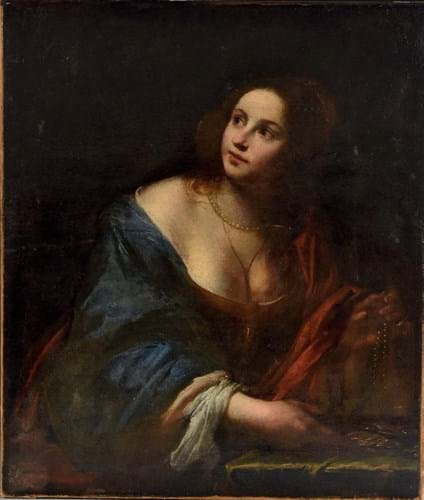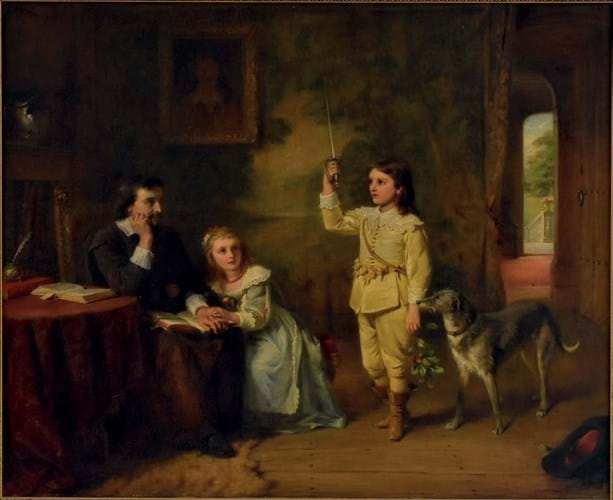
Looking at the results around the country, decent levels of activity have been recorded at some online-only and behind-closed-doors sales held either remotely or broadcast live from salerooms operating with social-distancing measures.
Encouragingly, good numbers of bidders have demonstrated a clear desire not just to carefully scan through catalogues and compete for items, but also to spot sleepers or place speculative bids if they think a particular lot warrants it.
Ample opportunities
A recent three-day sale at Bamfords (21% buyer’s premium) of Derby gave ample opportunities for buyers with over 1900 lots offered in total, including 180 lots of paintings and works on paper.
The sale had been postponed back in March as it was originally due to be held in the first week of the lockdown. At the rescheduled event on May 20-22, James Lewis of Bamfords reported higher numbers of participants across the wide range of categories compared to equivalent events in the last year or so.
A higher take-up was also recorded, with the selling rate running at around 90% and the hammer total coming in at approximately £590,000.
Intriguing lady
Among the works commanding the most interest were a number of the pictures. One in particular caught the eye: an intriguing Old Master that brought fervent competition and made 30 times its top estimate.
The 2ft 10in x 2ft 5in (86 x 73cm) oil on canvas of a lady with a pearl necklace and gold coins came from a deceased estate which provided a small selection of quality items to Bamfords. How the work was acquired was unknown, although an old lot number on the frame suggested it may have appeared at auction 40-50 years ago.
The auction house felt it had an appealing subject but no link to a particular artist could be established. It was therefore estimated at a there-to-be-sold level of £400-600.
Lewis said that it drew a “phenomenal rection”. Many bids were placed in advance and on the day it was sold for £18,000 to a private buyer on thesaleroom.com, making it the top lot of the entire auction. It appears that bidders believed it was a Florentine Baroque picture by a good hand.
Among the names suggested to ATG by Old Master specialists was Francesco Furini (1603-46), an artist noted for his depictions of buxom female subjects.
Influenced by Guido Reni, his works were often dramatically lit with the face of the figure being highly expressive. Examples occasionally appear on the market, most recently Artemisia, a slightly smaller oil on canvas that made $32,500 (£24,810) including premium at Sotheby’s New York in January, and Generosity or Liberality, a larger work that fetched $50,000 (£42,840) at Sotheby’s Paris in November.
Another possible candidate was Simone Pignoni (1611-18), a pupil of Furini who also painted many sensuous female portraits before he moved toward more overtly religious painting later in life. However, an alternative suggestion made was Giovanni Bilivert (1585-1644), an artist born in Florence to Flemish parents. He trained under Lodovico Cardi (or Cigoli) and was employed by the Grand Ducal court in Florence. Female allegorical figures were a known part of his oeuvre.
Like Furini, the style of his work – which was particular to the early Florentine Baroque – had similarities with this painting and at least one source felt that the female model here and the way she was painted probably pointed to a hand closer to Bilivert.
Attribution debate aside, this was an attractive 17th century picture with an excellent subject, so it was always likely to find appeal against such an enticing estimate.
The figure who is depicted fondling her jewellery and money may well have been a personification of Peitho, the goddess of persuasion and seduction, or perhaps simply a charming allegory.
The work will require a clean which, along with the removal of any overpaint, may well yield further elements that enhance the painting and help in firming up an attribution.
Either way, such results show the art market is still ticking over despite the current coronavirus crisis.
Hall source
Another portrait garnering interest at Bamfords was a large portrait which had been recently removed from Hassop Hall in Derbyshire. The 17th century country house had been a hotel until it was sold last year.
The 7ft 1in x 4ft 6in (2.15 x 1.38m) oil on canvas depicted Lady Elizabeth Cecil, daughter of the 2nd Earl of Salisbury, who married William Lord of Hardwick, 3rd Earl of Devonshire in 1639. It was catalogued ‘in the manner of Sir Peter Lely’ and guided at £500-800.
It had condition issues which may have in part been caused by flood water. As well as flaking and frame damage, it had been overpainted possibly a number of times.
Nevertheless, the estimate here was not deemed excessive even for a large furnishing picture by an unknown hand. It was knocked down to a UK buyer at £3700 – showing that a market still exists for ‘difficult’ Old Masters where estimates are kept low.
Sentenced to death

Thomas Wentworth, 1st Earl of Strafford, Lord Deputy of Ireland with his family by George Bernard O’Neill – £2200 at Bamfords.
Another picture with an historical subject but from a different source was a 19th painting of a 17th century subject.
The work by Irish artist George Bernard O’Neill (1828- 1917) depicted the English statesman Thomas Wentworth, the 1st Earl of Strafford, who served under Charles I and became Lord Deputy of Ireland. He was famously sentenced in the run-up to the civil war as Parliament forced the reluctant king to sign his death warrant.
The 2ft x 2ft 6in (62 x 77cm) oil on canvas shows Wentworth with his children; his son William with his sword raised and holding an oak branch emblematic of England. A portrait of Charles I is on the wall.
The inspiration for this picture may have come from the last letter that Wentworth wrote before he was executed on Tower Hill in May 1641.
Addressed to “My dearest Will”, it reads: “These are the last lines that you are to receive from a father that tenderly loves you. I wish there were a greater leisure to impart my mind unto you, but our merciful God will supply all things by his grace.”
The artist painted numerous narrative genre scenes which were highly sought after in his day, allowing the artist to achieve a considerable degree of financial success. Although they are often seen as overly sentimental today, they still command a following in the current market. Most tend to sell at auction in the low thousands. This one was estimated at £2000-3000, and it took £2200, a solid mid-range price.
Grand estates
Views of Derbyshire’s grand estates such as Hardwick Hall, Kedleston Hall and, the jewel in the crown, Chatsworth House, remain a popular collecting area. But quality originals by notable names or historical interesting examples are not always easy to find.
Another country house in the region is Haddon Hall, near Bakewell, a former seat of the Dukes of Rutland. Still a private residence owned by Lord and Lady Manners, it has appeared in a number of films recently including Mary Queen of Scots in 2018 and The Other Boleyn Girl in 2008.
This 2ft 2in x 3ft 1in (65 x 94cm) signed oil on canvas is one of a small number of views of the Elizabethan house by Henry Lark Pratt (1805-73). Another is in Buxton Museum & Art Gallery. Estimated at £600-800, it sold for £750 at Bamfords.
The artist, who trained as a porcelain painter at the Derby Factory, appears at auction occasionally with views of his local area making the highest prices. One particularly notable result came back in 1994 when Christie’s sold a view of Derby Market for £16,100.
However, this picture made a decent sum for a work by the artist sold in a regional sale in the last few years.
Notre Dame view
Elsewhere in the sale, one of the works bringing notable bidding was a view of Notre Dame in Paris by Henri Alphonse Barnoin (1882- 1935). Although it suffered from a little craquelure, the 21¼ x 2ft 1in (54 x 64cm) oil on canvas was an attractive and pleasantly coloured composition. It came from a private Leicestershire estate and was keenly pitched at £200-300.
The artist became an established name, winning an honourable mention at the Paris Salon in 1909, a silver medal in 1921 and finally a gold medal in 1935. His main subjects tended to be landscapes and coastal scenes of France, although his views of Paris are also highly regarded.
This one sold at £1900 to UK private buyer online. Although his views of boats bobbing in the water in Brittany harbours can fetch more, this sum compares to the £2000 bid for a pair of smaller views of the Seine in Paris that were offered together at Lyon & Turnbull in December 2008.
















